West
California mom who watched rich and powerful 'narcissist' mow down her two sons makes promise to killer
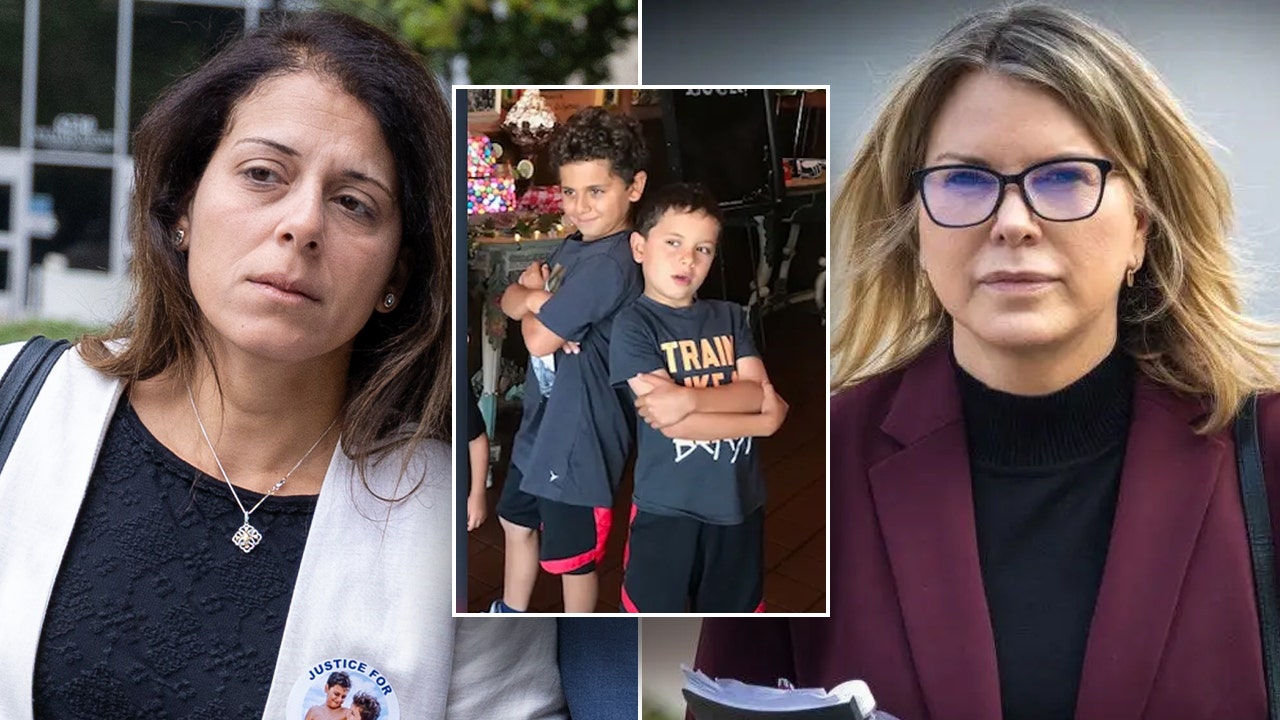
The mother of two California boys who were killed by a rich and powerful socialite who blew through a crosswalk in a speeding Mercedes has vowed to confront the convicted murderer in prison in the hope that she will someday show remorse after what critics call a lenient sentence of 15 years to life in prison.
“My plan is to give her a visit in prison, in a few months or maybe a year, and I will ask her that question directly,” said Nancy Iskander, the mother of 8-year-old Jacob and 11-year-old Mark. “I will say, ‘Are you able to say, “I am sorry I killed them?”’ This will allow me to forgive, because I need to get through what she’s done.”
Iskander was forced to dive to safety with her youngest son, Zachary, who was 5 at the time, when Rebecca Grossman, a 60-year-old co-founder of a prominent burn center and a wealthy Los Angeles philanthropist, sped toward them at more than 80 mph.
LOS ANGELES SOCIALITE REBECCA GROSSMAN GETS 15 YEARS TO LIFE FOR CRASH THAT KILLED 2 BOYS
Mark and Jacob Iskander were both killed when Rebecca Grossman sped through a crosswalk while racing home from a boozy date in 2020. (Nancy and Karim Iskander)
The mother and surviving son watched in horror as Grossman slammed into Mark and Jacob at an estimated 81 mph. Then she fled the scene.
Grossman, who prosecutors described as a “completely self-serving” narcissist, was convicted of two counts of second-degree murder and fleeing the scene of an accident for the Sept. 29, 2020, crash, but not without a number of dramatic curveballs in the case.
“She has lived a life of privilege and clearly felt that her wealth and notoriety would buy her freedom,” prosecutors wrote to the court while requesting the maximum allowable sentence of 34 years to life in prison.
According to prosecutors, even after her conviction she refused to take responsibility for the deaths, which jurors found were murders and not a “tragic accident.”
On Friday, Judge Joseph Brandolino sentenced her to two concurrent terms of 15 years to life in prison plus another three years for fleeing the scene that will also run concurrently. California legal experts tell Fox News Digital she could be eligible for parole in just eight years.
MOTHER OF SLAIN CALIFORNIA BOYS SPEAKS OUT AS CONVICTED KILLER DRAGS OUT CASE IN COURT: ‘SHE’S A MURDERER’

Rebecca Grossman, left, and daughter head to Van Nuys Courthouse in West Van Nuys, California. (Irfan Khan/Los Angeles Times via Getty Images)
One glaring issue with the sentencing, in Iskander’s view, is that Grossman’s sentences were not imposed to run consecutively, which the mother says reduces the murders of two boys as if they were one person and completely erases Grossman’s attempt to flee the scene and avoid justice altogether.
“I don’t think I’ll ever be able to accept that … or even understand the judge’s point of view,” she told Fox News Digital.
LA DA’S CATASTROPHIC INCOMPETENCE’ COULD BOTCH CASE AGAINST CONVICTED DOUBLE CHILD KILLER, LAWYER WARNS

Karim Iskander, right, and wife Nancy arrive for Rebecca Grossman’s sentencing on June 10, 2024, in Van Nuys, California. (Brian van der Brug/Los Angeles Times via Getty Images)
The concurrent sentences for a suspect who prosecutors said showed no remorse is unusually lenient, according to Garrett Dameron, a supervisor in the Los Angeles District Attorney’s Office who oversaw the line prosecutors on the case.
In contrast, a man in nearby Ventura County received a sentence of 30 years to life in prison for the deaths of a woman and her granddaughter who were riding together on a motorcycle when he smashed into them head-on while driving high.
FORMER MLB PITCHER SCOTT ERICKSON MADE THREATS AFTER HE WAS SEEN HIDING NEAR FATAL CRASH, DAUGHTER SAYS
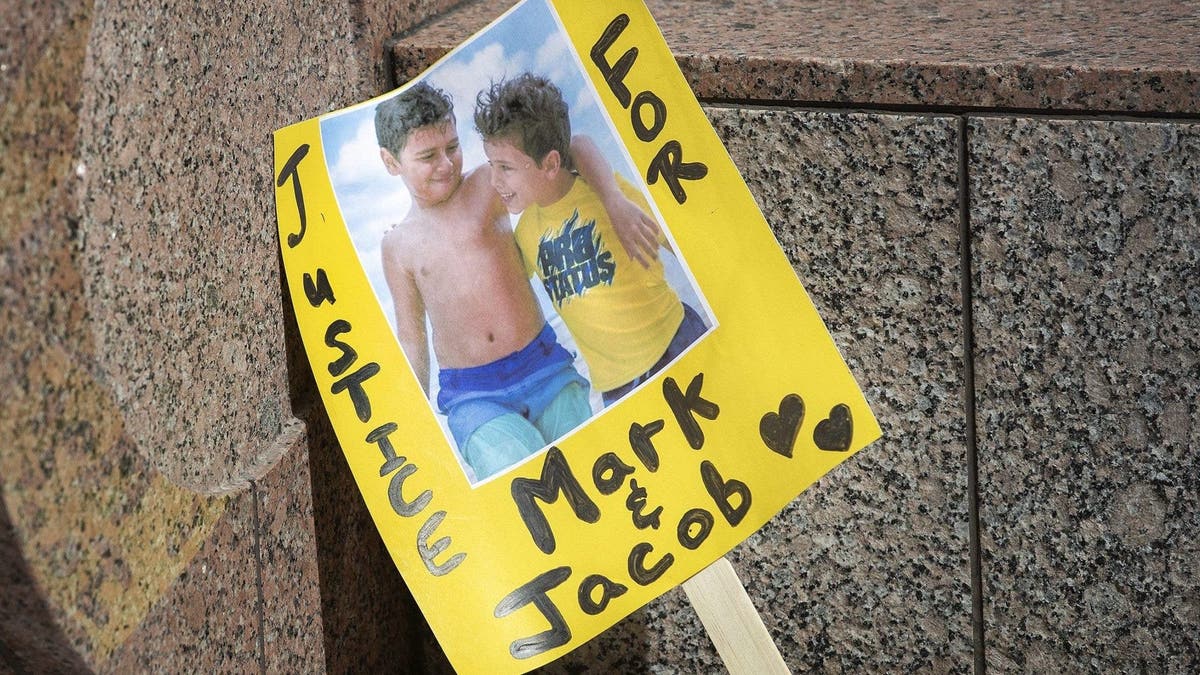
A sign shows an image of Mark Iskander, 11, left, and his brother, Jacob, 8, outside a Van Nuys courthouse. (Mel Melcon/Los Angeles Times via Getty Images)
“She basically showed no regard for the way our justice system works, and he rewards her with basically the lightest sentence he can give her,” Dameron told Fox News Digital. “It’s deeply offensive.”
While behind bars, Grossman was accused of attempted juror tampering and repeatedly violating court orders. Prosecutors say she also tried to release sealed evidence to the public and to contact witnesses.
“The defendant’s actions from September 29, 2020, through today show a complete lack of remorse and narcissistic superiority that leads to only one conclusion, that she is undeserving of any leniency,” prosecutors wrote in a sentencing memo.
CALIFORNIA SOCIALITE REBECCA GROSSMAN ORDERED TO STAND TRIAL IN HIT-AND-RUN DEATHS OF 2 CHILDREN
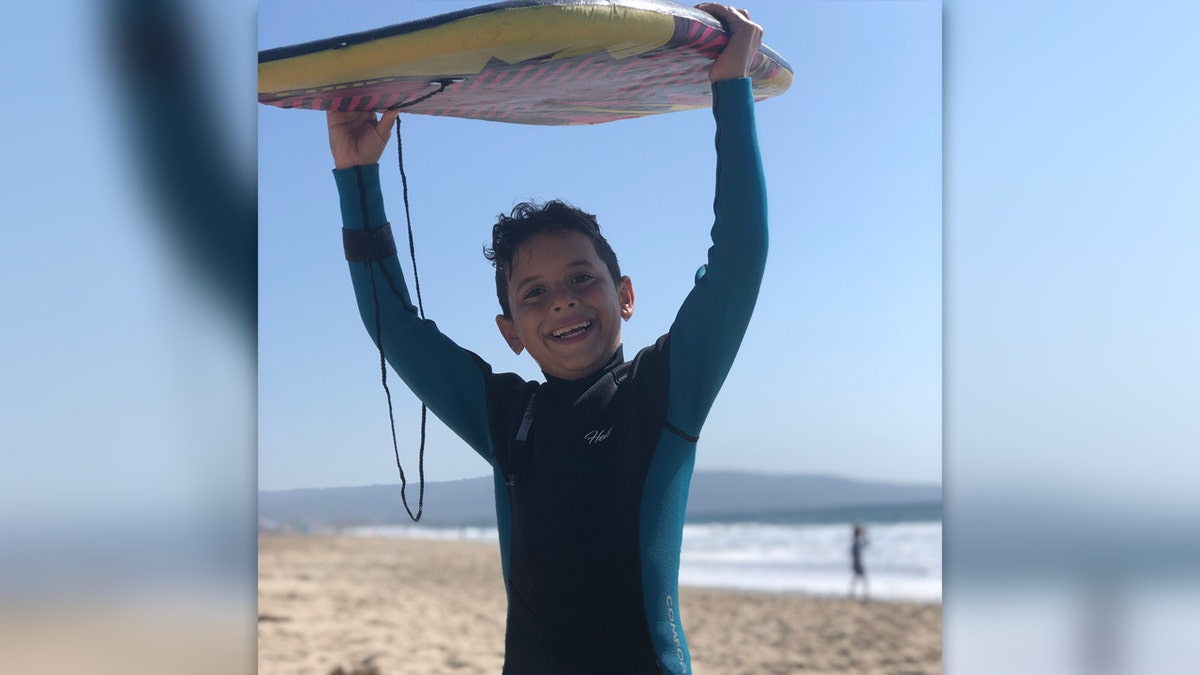
Jacob Iskander (Nancy and Karim Iskander)
Iskander said Grossman even made an anonymous donation of $25,000 toward the boys’ funeral costs, which the mother argues violated her right to refuse the killer’s money.
“She essentially attempted to buy her way out of this,” Dameron said. “Never has she once shown a modicum of remorse or sympathy or never has she even hinted at taking responsibility for this. And my issue with the judge is he had made comments throughout the trial that he didn’t like the murder charges in this case. Instead of objectively pronouncing [the] sentence as he should’ve, I think he’s attempting to legislate from the bench.”
Grossman’s lawyer, James Spertus, said the judge gave a thoughtful and detailed explanation for the sentence, adding that Grossman is a first-time criminal offender who had a decades-old reputation for humanitarian work.
“This case involves a tragic accident that resulted in incalculable loss to the Iskanders, so it is understandable they would be disappointed in any sentence short of the death penalty,” he told Fox News Digital. “However, I expected more maturity and professionalism from the prosecutors.”
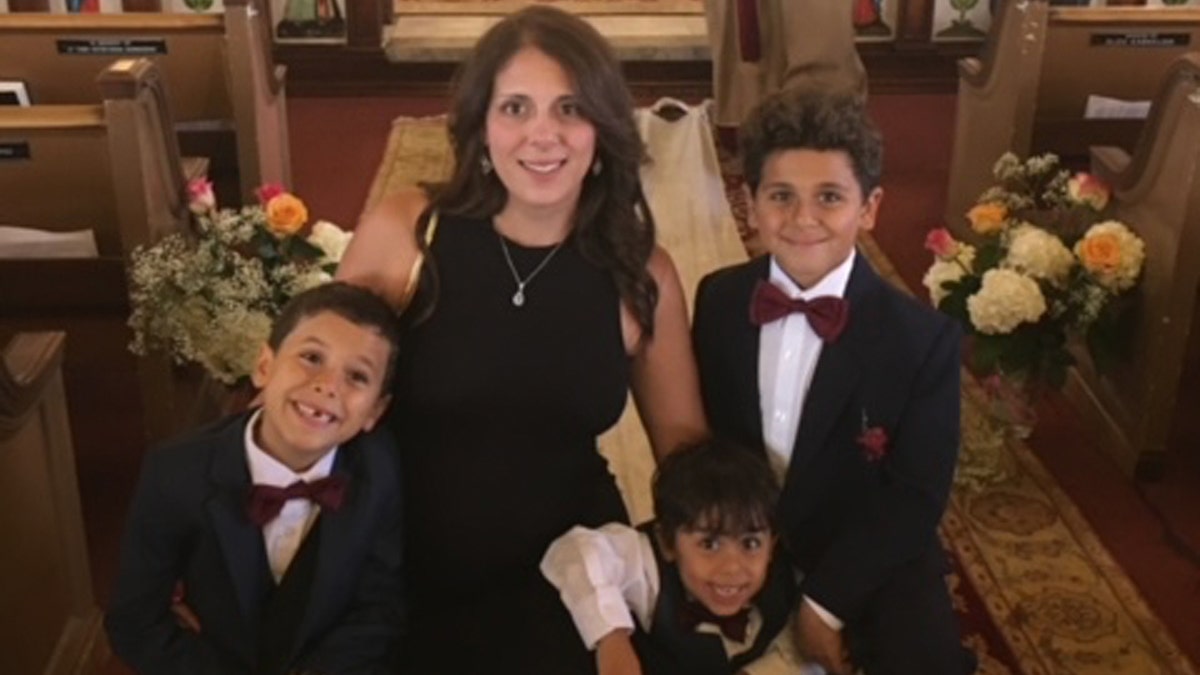
Nancy Iskander and her three sons, Mark, Jacob and Zachary (Nancy and Karim Iskander)
‘WOKE’ CALIFORNIA PROSECUTOR ‘IRONICALLY IN CHARGE OF ETHICS’ CHARGED WITH FELONIES
Grossman was speeding, had alcohol and drugs in her system, and plowed through the boys as they made their way through a crosswalk with their mother and younger brother. Court documents show she had a series of traffic citations going back to at least 2000.
Then, according to Iskander, she tormented the family for years with her legal maneuvering and alleged attempts to tamper with witnesses and the jury.
She explained that she constantly has flashbacks to the day of the crime, the sight of Mark and Jacob on the road.
“I keep living it every day, every minute of every day,” she said. “How can he just ignore something like that?”
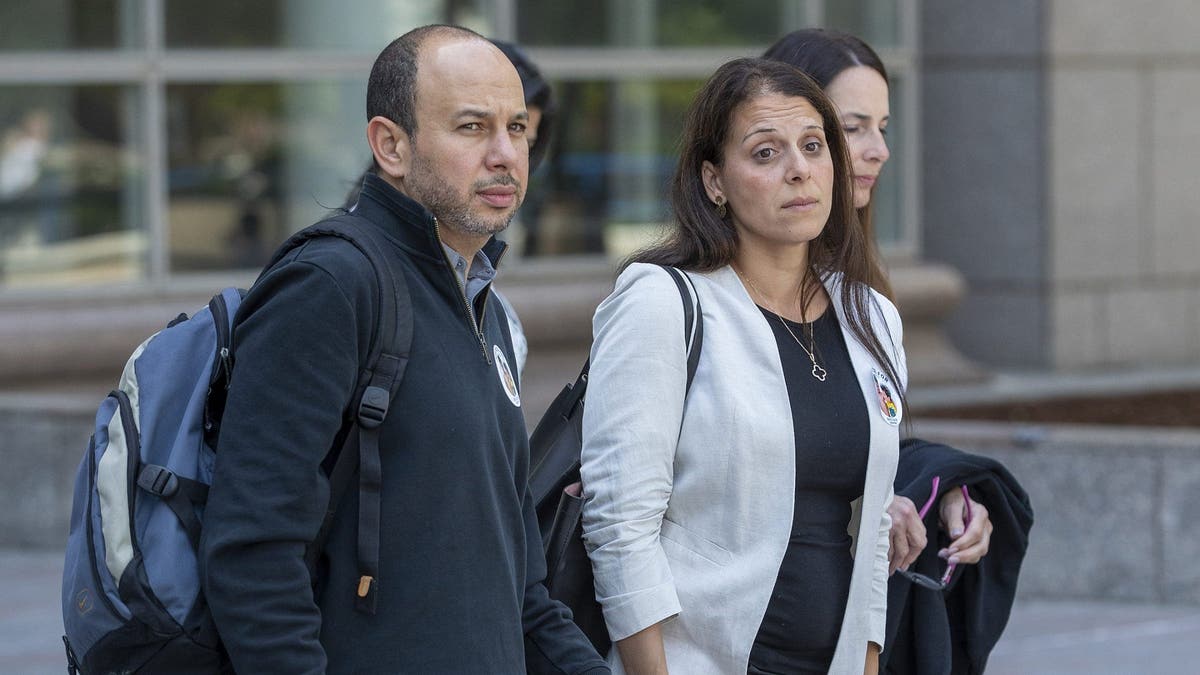
Nancy Iskander and her husband, Karim, are shown outside court in Van Nuys, California. (Mel Melcon/Los Angeles Times via Getty Images)
Following the horror, the boys’ parents and younger brother have devoted themselves to helping others, kicking off a charitable foundation in honor of Mark and Jacob and launching a foster care project that will soon be licensed in Los Angeles.
Zachary, now 8, is preparing to go on his first mission overseas to help build houses in memory of his brothers, Iskander said.
“I had always wanted them to wait until their teen years, but he wants to do something to honor his brothers,” she said.
She is hoping to raise money for The Mark & Jacob Foundation at an Oct. 20 event and for the forthcoming Mark & Jacob Foster Care Ministry.
Iskander also said she is willing to help other parents suffering through the trauma of losing their children.
“I just want to say to anyone listening, if they have a tragedy, if they are broken, to keep their faith,” she said.
Read the full article from Here

Oregon
2024 Oregon football schedule: When is Oregon Ducks vs. Washington?

Hey look! A familiar face on the 2024 Oregon football schedule! It’s even a regional matchup in the brand new era of the Big Ten.
Dan Lanning and the Oregon Ducks will get the distinct pleasure of welcoming the Washington Huskies to Autzen Stadium in Eugene as the 2024 Oregon football schedule (kinda) wraps up with its final regular season game (there should be more football after this, but it will be postseason type of stuff).
This is probably the perfect rivalry matchup for these two former Pac-12 teams who have migrated into the Big Ten. Despite both teams’ move to the Big Ten, this Pacific Northwest rivalry remains intact, adding a familiar and passionate element to Oregon’s new conference landscape.
Familiarity matters sometimes. And it should be fun to see how these two teams measure up against one another this year.
After all the success that Washington had a season ago, most of the key contributors from that College Football Playoff team (right along with the coaching staff) left Seattle for greener pastures in Tuscaloosa, Alabama.
So, it’ll be interesting to see what Jedd Fisch has assembled with the Washington Huskies in his first season in the Pacific Northwest.
It’s also just fun that this rivalry has been preserved. With this matchup coming at the end of the Oregon Ducks’ first Big Ten season, it offers a chance for Oregon to make a definitive statement about their place in the new conference. On top of that, it gives the Ducks a chance at revenge for the two losses last year that kept Oregon out of the College Football Playoff.
And, well, regional rivalries are great for this sport. We don’t need to justify that.
With the sort of expectations that Oregon has this year, and when considering all that has been lost from Washington’s roster and coaching staff, this is a great chance for the Ducks to put an exclamation point on what is hopefully a great 2024 Oregon Ducks schedule during the 2024 college football regular season.
But hey, rivalries get weird sometimes. It’s totally possible that happens here. I don’t necessarily expect it, but it’s college football.
Utah
What to expect for the Nov. 5 general election in Utah

SALT LAKE CITY (ABC4) — Polls closed for Utah’s primary elections on June 25 and preliminary results began coming in, setting the stage for the upcoming general election on Tuesday, Nov. 5.
While official voter canvassing results were not scheduled to be available until July 22, the Associated Press projected winners for several races by June 25.
Here’s what to expect for the voting process for the general election in November.
Who is running in Utah?
The June 25 primaries narrowed down the list of candidates running for office in Utah.
Gov. Spencer Cox was the projected winner for the gubernatorial race, according to the AP.
Rep. John Curtis was expected to clinch the Republican nomination to replace Sen. Mitt Romney, and would face off against Democratic challenger Caroline Gleich and Independent challengers Carlton E. Bown and Robert Newcomb in the 2024 General Election in November.
For a full list of Utah’s candidates, click here.
When are the registration and voting deadlines?
Depending on how Utahns register to vote, the deadlines for registration may vary.
Deadlines for registration (and how to register)
Voters in Utah can register online, in person, or by mail.
Online voter registration is available at vote.utah.gov, and it must be completed by Oct. 25, 2024. The deadline for registering by mail is also Oct. 25.
If registering to vote in person, the deadline is Nov. 5, 2024 (meaning you can register on Election Day if you have the proper forms of identification).
Deadlines for voting
Early in-person voting at the Government Center begins Oct. 22, 2024, and ends Nov. 1, 2024. Early in-person voting at satellite locations begins Oct. 29, 2024, and ends Nov. 1, 2024.
If returning a ballot by mail, the ballot must be postmarked by Nov. 4, 2024. Ballots should be sent to voters by Oct. 15, and the last day to request a mail ballot is Oct. 29.
On Election Day — Tuesday, Nov. 5 — Utahns can vote at polling locations from 7 a.m. until 8 p.m.
To find the closest polling location to you, visit votesearch.utah.gov and enter your address.
How do you check registration status in Utah?
If you want to vote but are unsure if you have already registered, you can check your status online at votesearch.utah.gov. To check your registration status, you need to provide your name, date of birth, and address.
That website can also display tracking information for mail ballots or provisional ballots, but not if you voted at a voting machine or in person.
Once you register to vote in Utah, you don’t need to re-register unless your registration status changes.
“If you have moved outside of the state and returned, or your name has changed, or your registration has lapsed by not voting in the last two presidential elections you will need to re-register,” according to the Salt Lake County Clerk’s Office.
Registering on Election Day
Did you know that if you are not yet registered to vote you can do so on Election Day?
“A poll worker will assist you in registering to vote and casting a provisional ballot on an electronic voting machine,” the Salt Lake County Clerk’s Office said.
To register on Election Day, you must bring a valid photo ID and proof of Utah residency to an Election Day vote center during polling hours. To see the full list of approved forms of identification, click here.
Who can vote in Utah?
There are three criteria for voters in the Beehive State.
First, you must be a resident of the United States in order to be eligible to vote in Utah. Second, you must reside in Utah for at least 30 days prior to the next election.
Third, you must be at least 18 years old on or before the general election. If you are 17 years old at the time of the primary election, you may still vote if you are 18 years old on or before the date of the general election.
Washington
Burst in covid spending helped students recover, researchers find

Schools reopened. Students and teachers were, for the most part, kept safe from covid. But what about academic recovery? Did the money help kids get back on track?
Two new reports offer the same answer: Yes.
“There were many reasons to think the money wouldn’t have a very big effect on kids learning because it wasn’t targeted and there were lots of other needs,” said Sean Reardon, an education researcher at Stanford University and co-author of the first paper. “But in fact it did have a significant effect on learning.”
Yet it didn’t finish the job. Between 2019 and 2022, the average U.S. student lost about a half grade level in math and a third of a grade level in reading, according to test data from 30 states analyzed by researchers at Harvard and Stanford universities in the Education Recovery Scorecard project. Students made up about 30 percent of the loss in math and 20 percent of the loss in reading between spring 2022 and spring 2023. Some — though not all — of that can be traced to the federal funding, the researchers conclude. (Results of spring 2024 testing are not yet available.)
“Despite what is an unprecedented amount of money, kids are still far behind,” said Dan Goldhaber, an education researcher at the American Institutes for Research and the University of Washington, who co-authored the second research paper.
Why wasn’t $190 billion — the largest one-time education investment in U.S. history — enough? Among the reasons: Some of the money was spent on covid mitigation and testing, the main focus of the legislation, not academics. Not all of the money for academics was invested in the most effective strategies, because they had other priorities or perhaps were unaware of the research. Not every district got robust funding. And the losses were deep.
Fully catching kids up would require additional spending, the researchers find. The opposite is actually unfolding, with districts running out of the money already allocated. Schools are required to spend the last of the covid relief funding in the coming months, and across the country, districts are cutting staff and programs that were aimed at accelerating academic recovery.
“If the goal is having all students made whole from the pandemic, I do think that states will need to step up,” said Tom Kane, a professor of education and economics at Harvard University and co-author of the first paper, which was produced by a team of researchers from Harvard, Stanford and Dartmouth universities.
Still, the gains already recorded were big enough to pay for themselves, based on how increases in academic achievement translate into higher wages in adulthood, Kane said.
Both papers take advantage of a quirk in how the nearly $190 billion in federal covid relief funds, which came over three allotments in 2020 and 2021, were allocated to K-12 school districts. The government relied on a formula that gave more money to districts with higher portions of students living in poverty. Due to oddities in that formula, districts with similar poverty levels got different amounts. Among the districts where at least 90 percent of students are from families poor enough to qualify for free or subsidized school lunches, federal allocations ranged from less than $4,000 to more than $13,000 per student — in some cases, much more.
The differences among district allocations allowed researchers to estimate the relationship between more funding and test scores. One study examined funding from only the third allocation, by far the largest, approved in 2021; the other looked at the second and third tranches. Both studies examined the impact of the money on all districts, rich and poor.
The two teams came to the same conclusion: An additional $1,000 per student in federal funding translated into a gain of about 3 percent of a grade level of learning in math. For reading, the gains were similar in one study and a bit smaller in the other. These results are in line with what pre-pandemic studies found of earlier, more modest increases in education spending.
This implies that giving a school district an extra $8,000 per student would have been enough to make up nearly half of the average math losses. That compares to average per-pupil spending of $13,187 in 2019, before the pandemic and the surge of federal dollars.
Looking at it another way, the Harvard-Stanford team compared achievement levels between high-poverty districts with similar levels of past achievement that received larger grants and smaller grants. Students in the high-grant districts gained about a fifth of a year more in math than the low-grant districts did and almost as much in reading.
The money appears to have made a difference in the School District of Philadelphia, which received more than $1.6 billion in federal funding — more than $14,000 per student. Between spring 2022 and spring 2023, students made up on average a half grade in math — more than 80 percent of the average losses sustained in Philadelphia between 2019 and 2022.
A large share of money in Philadelphia was spent on extra learning time for students — before and after school and over the summer, and to add social services and counselors. The district also spent $325 million on facilities improvements, something meant to make old buildings safer but that did not directly impact student learning.
Superintendent Tony B. Watlington, Sr., in a statement, credited the federal funding with playing a key role in Philadelphia becoming “the fastest improving large, urban district” in the country.
Now the district is hoping that a statewide lawsuit challenging Pennsylvania’s school funding formula will result in more funding for Philadelphia to replace the lost federal dollars. For now, the schools are using reserve funds to maintain the supports put in place, said Christina Clark, a spokeswoman for the district.
“We’re working on preserving those because we’ve seen the impact it’s had on students,” she said.
The Cleveland Metropolitan School District also saw significant federal spending — nearly $427 million in the second and third allotments, or about $12,000 per student. As in Philadelphia, students also gained about a half year of learning in math between spring 2022 and spring 2023, but the losses in Cleveland were deeper, so this erased only about half of the slide since 2019. Early data from spring 2024 testing shows progress continued, though details were not available, officials said.
One of Cleveland’s key investments was a robust summer learning program, which combined engaging and fun activities with academic review. The district also upped funding to each school, and some used the extra for tutoring or other academic supports.
“We would not have been able to do some of this work at scale if we did not have this funding,” said Selena Florence, the district’s chief academic officer.
With the federal money running out, Cleveland this year cut back its summer program, which had served more than 5,000 students in the last few years, by about half. The district cut back other programs too, and eliminated the extra school-based funding.
But Florence said she is optimistic that Cleveland can continue making progress. “Having additional money is always going to help us doing the work we have to do,” she said. “The work can certainly be done without it.”
Researchers did not credit all the academic gains recorded to more federal spending. Many districts that received no money, or very little, saw large gains. These were typically wealthy districts that consistently have other advantages.
And low-income districts saw improvements beyond what the federal funding alone would have predicted, the Harvard-Stanford group found. Among districts with at least 70 percent of low-income students, between one-third and one-half of the improvement in test scores could be attributed to the federal funding. It was not clear what accounted for the rest; possibilities include deeper parental involvement, extra efforts by teachers or extra local funding.
Kane bemoaned that there is scant data to explain how districts spent their money, seeing a missed opportunity to assess which interventions were most effective. Past research has found certain initiatives — such as intense tutoring or small class sizes in the early years — produce greater academic gains than others. The federal rules required that districts spend at least 20 percent of their money addressing learning losses, but there was little guidance beyond that.
“In the absence of being able to say which interventions work, we can ask the next best thing,” he said. “Did the districts that got and received more money go faster in catching up?” The answer, they found, is yes.
-

 News1 week ago
News1 week agoJoe Biden, Barack Obama And Jimmy Kimmel Warn Of Another Donald Trump Term; Star-Filled L.A. Fundraiser Expected To Raise At Least $30 Million — Update
-

 News1 week ago
News1 week agoIt's easy to believe young voters could back Trump at young conservative conference
-

 World1 week ago
World1 week agoRussia-Ukraine war: List of key events, day 842
-

 World1 week ago
World1 week agoSwiss summit demands 'territorial integrity' of Ukraine
-

 World1 week ago
World1 week agoProtesters in Brussels march against right-wing ideology
-

 News1 week ago
News1 week agoA fast-moving wildfire spreads north of Los Angeles, forcing evacuations
-

 World1 week ago
World1 week agoAl-Qaeda affiliate claims responsibility for June attack in Burkina Faso
-

 Politics1 week ago
Politics1 week agoJudge rules Missouri abortion ban did not aim to impose lawmakers' religious views on others













